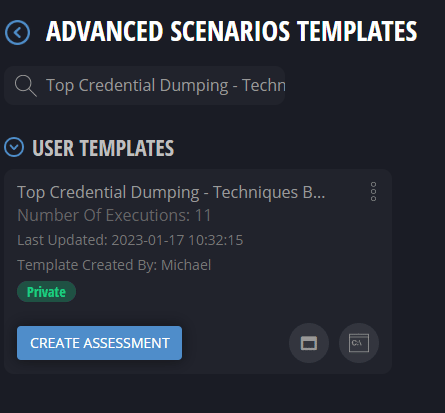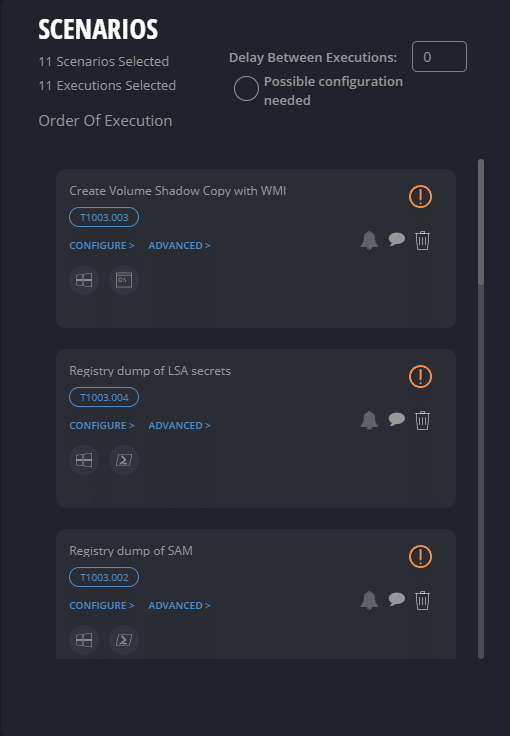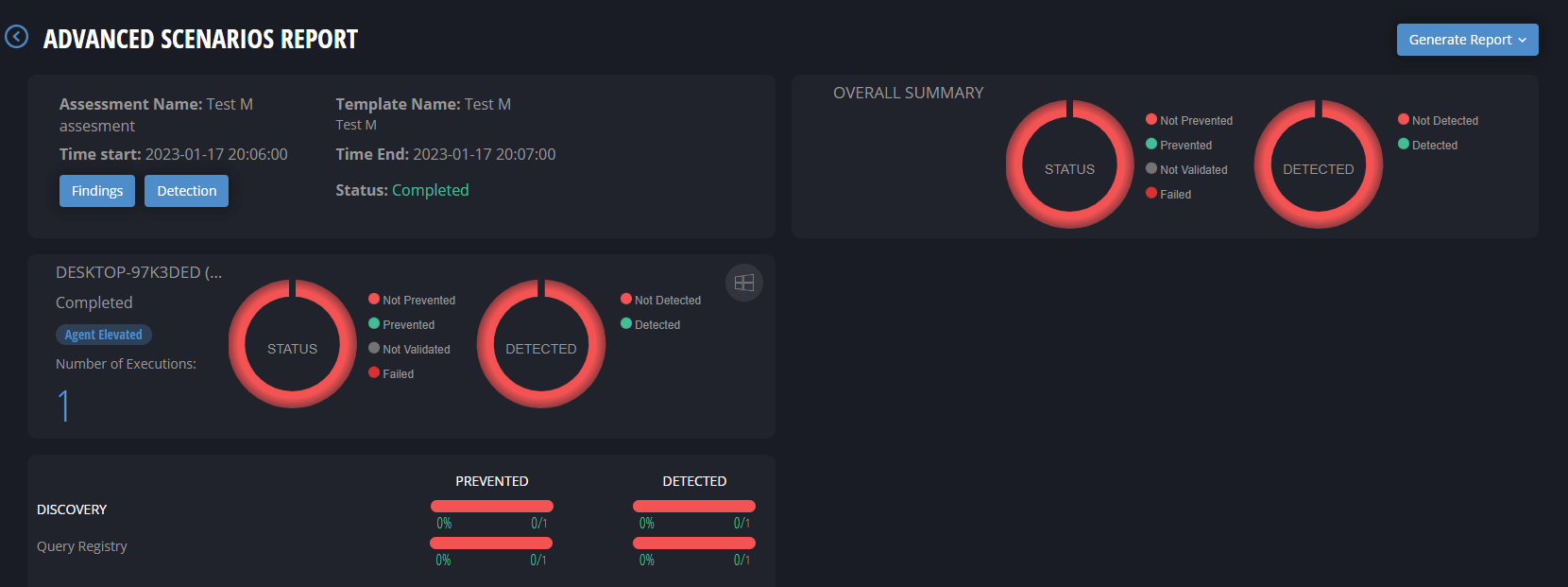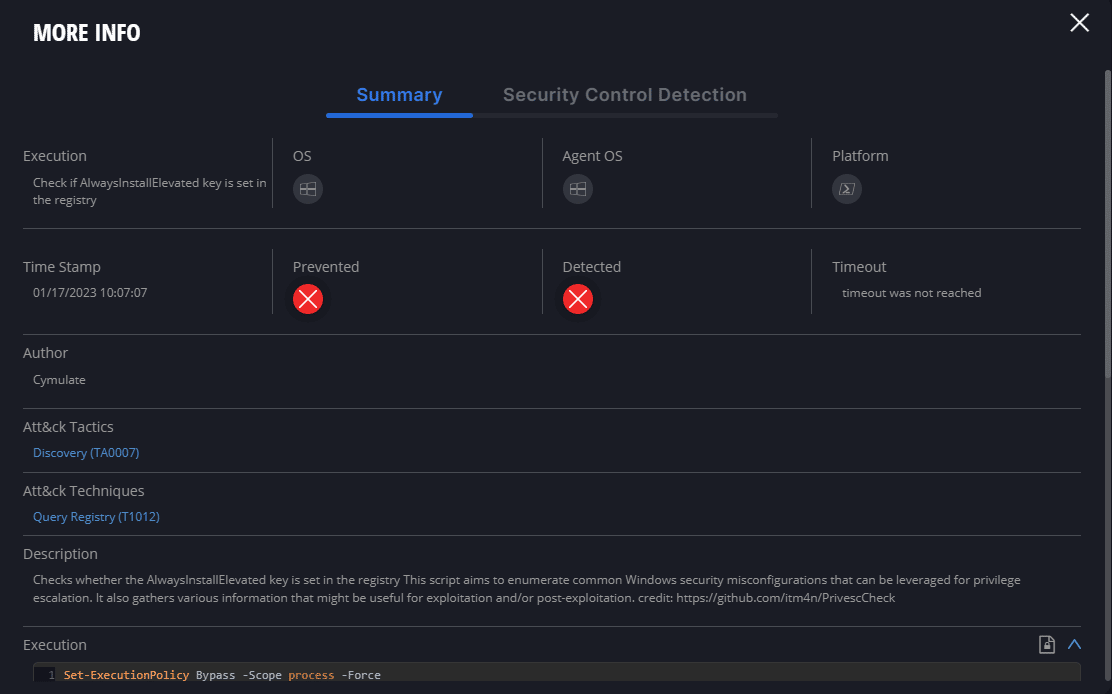Credential Dumping Templates - The Future of ASM Validation

The Cymulate customer success team works closely with our community of customers to make sure that the platform meets their needs over time.
Because of this interactivity, our threat research team has been able to create new Advanced Scenarios templates based on the most requested scenarios customers have needed to simulate in their environments. Over the next few blog posts, we’ll take a look at the top five requested Advanced Scenarios templates, so your organization can take advantage of them as well.
Understanding Credential Dumping Attacks
Credential dumping (AKA password dumping) attacks are hard-to-detect tactics used by threat actors to obtain password hashes and other sensitive authentication credentials from a system.
Broadly speaking, this type of attack consists of:
- Gaining unauthorized access to a device, typically its memory where unencrypted usernames and passwords used by the devices' users may be stored.
- Copying or extracting available credentials.
- Writing this data out to a file that can be readily accessed by the threat actor, or even exfiltrated from the environment.
Once the credentials are obtained, the attacker can use them to access sensitive information on the device or other accounts associated with the stolen credentials. The attacker could also potentially infect other devices on the same network and escalate their privileges by stealing more valuable account credentials, which could lead to the entire network being compromised or taken down. While this outcome (lateral movement) is not simulated in this specific template; it can be simulated with other tools in the Cymulate Platform for further assessment.
Assessing a System’s Resilience to Credential Dumping Attacks
As the primary goal of a credential dumping attack is to obtain data usable at a later stage, it is usually run by stealth and challenging to detect quickly.
The optimal way to defend against credential dumping attacks is to prevent the ability of a threat actor to perform them by building controls and infrastructure that can be observed, tested, and improved upon over time. While not always possible, this methodology allows the organization to rely less on third-party developers when attempting to combat attacks and has benefits well beyond just preventing credential dumping. Therefore, it remains the best primary methodology for defense.
The only way to effectively verify that a system is resilient to credential dumping attacks is to run attack simulations that perform the techniques used for credential dumping in a safe and controlled manner. This allows the organization to see how many are capable of completing the dump process, how many are detected, and how many are stopped. This evidence-based process provides a reliable picture of the system's resilience to credential dumping attacks, with granular information about the security gaps - if any are discovered - that should be closed to prevent attacks.
Yet, simulating credential dumping attacks can be a time-consuming and resource-intensive process. Accurately testing an organization's defenses requires careful planning and executing each step of the attack, taking into account the specific technologies and security controls in place. This typically requires skilled professionals to dedicate their expertise to this challenging sequence of tasks at the expense of other operations they could be spending time on. Because of this, either other operations are delayed, or the testing of credential dumping is delayed – with either outcome leading to an unwanted impact on the organization’s security overall.
To aid in avoiding that situation, the Cymulate Advanced Scenarios module offers the ability to create templates that can perform different threat assessments. In the case of credential dumping, Cymulate has created a pre-built template that merely requires some basic variables to be filled in.
Top Credential Dumping Techniques By Cymulate 2022
The credential dumping technique falls under the "Credential Access" category in the MITRE ATT&CK framework and can be launched with a variety of techniques, such as Mimikatz, Pwdump, LSADump, and more.
Cymulate's Credential Dumping Advanced Scenario template runs the following executions :
- Create Volume Shadow Copy with WMI: This technique involves using Windows Management Instrumentation (WMI) to create a volume shadow copy, which can be used to make a copy of the system's data and potentially extract credentials.
- Registry dump of LSA secrets: This technique involves accessing the registry on a system and extracting the Local Security Authority (LSA) secrets, which can include password hashes and other sensitive information.
- Registry dump of SAM, creds, and secrets: This technique involves accessing the registry on a system and extracting the Security Account Manager (SAM) database, as well as any stored credentials and secrets.
- Dump All credentials using all LaZagne methods available (Windows): This technique involves using the LaZagne tool to extract all available credentials from a system.
- DCSync using Mimikatz (All users): This technique involves using the Mimikatz tool and the Domain Controller (DC) Sync function to request a copy of the domain's password hashes.
- DCSync using packed Mimikatz (64): This technique is similar to the previous one but involves using a packed version of Mimikatz specifically designed for 64-bit systems.
- PowerShell DPAPI Unprotect (decrypt) data from file: This technique involves using PowerShell and the Data Protection API (DPAPI) to decrypt data from a file, potentially allowing an attacker to extract credentials.
- Dump SPN user's hash with Kerberoasting: This technique involves using the Kerberoast tool to request a large number of Kerberos tickets and extract password hashes from them.
- Kerberos ticket with unconstrained delegation: This technique involves obtaining a Kerberos ticket with unconstrained delegation, which can be used to impersonate other users and potentially extract their credentials.
- SpoolSample: This technique involves using the SpoolSample tool to coerce Windows hosts to authenticate to other machines via the MS-RPRN RPC interface, potentially allowing an attacker to extract credentials.
Preview of the Credential Dumping Template in Action
After creating an assessment from the Top Credential Dumping template from the Advanced Scenario tab


Check the results.

Get more information:

Get mitigation guidance

After mitigation, verify the implemented mitigation measures effectiveness at a click by re-running the assessment.
The credential dumping template is the first of a series of soon-to-be-available templates covering additional attack categories that come right from what customers are using the Cymulate platform to accomplish. As with all of the platforms, performing simulations of threat actor actions allows the organization to become proactive in their cybersecurity resiliency.
Knowing the effectiveness of people, processes, and technology can allow the organization to identify gaps, define the best combination of the three to use to close the gap, and confirm the remediation has the desired impact.
By including these chainable execution techniques in its Advanced Scenarios module, Cymulate's platform makes it easier for cybersecurity teams to simulate a wide range of techniques used for specific attack types.
This expanded ability to customize the scenarios to reflect an organization's specific environment and threat landscape enhances blue and red teamers’ ability to run realistic and accurate simulations, hence obtaining a better understanding of the organization's defenses’ effectiveness and identifying exploitable security gaps.



